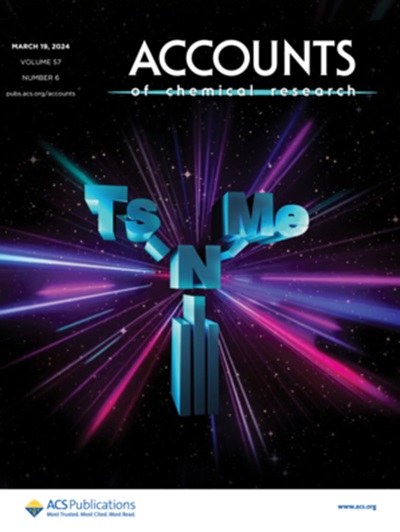Redefinition and revision of Ser Rathbun, 1931 (Decapoda: Brachyura: Pilumnidae)
IF 16.4
1区 化学
Q1 CHEMISTRY, MULTIDISCIPLINARY
引用次数: 0
Abstract
The taxonomy of the setose brachyuran crabs Ser fukiensisRathbun, 1931 and Litocheira amoyensisGordon, 1930, both described based on material from Fujian, China, have been poorly understood for decades.. The monotypic genus SerRathbun, 1931 had been placed under Carcinoplacinae H. Milne Edwards, 1852 and Rhizopinae Stimpson, 1858 by subsequent authors. Examining type lots of both species and recently acquired material, we find the holotype of L. amoyensis is an immature male but this name represents a senior synonym of Ser fukiensis. The genus Ser is re-diagnosed and hereby placed under Pilumninae Samouelle, 1819. It is here considered to contain three species: the type species, Ser fukiensis (= S. amoyensiscomb. nov.); S. sasekumari (Serène, 1971) comb. nov.; and S. mikawaensis (Sakai, 1969) comb. nov.. Comparisons are made between Ser and morphologically similar genera: RhizopoidesNg, 1987, CryptocoelomaMiers, 1884, PseudolitochiraWard, 1942, BossacarcinusŠtevčić, 2011, and HeteropilumnusDe Man, 1895. It is also apparent that Heteropilumnus is a morphologically heterogeneous group, and that its type species, H. stormiDe Man, 1895, is quite distinct from other species currently included in the genus. We discuss the implications of this finding, especially as it pertains to Ser.重新定义和修订 Ser Rathbun, 1931 (Decapoda: Brachyura: Pilumnidae)
数十年来,人们对根据中国福建的材料描述的刚毛腕足蟹 Ser fukiensisRathbun, 1931 和 Litocheira amoyensisGordon, 1930 的分类一直知之甚少。单型属 SerRathbun, 1931 曾被后来的作者归入 Carcinoplacinae H. Milne Edwards, 1852 和 Rhizopinae Stimpson, 1858。通过研究这两个物种的模式标本和最近获得的材料,我们发现 L. amoyensis 的主模式为未成熟雄性,但该名称是 Ser fukiensis 的高级异名。我们重新诊断了 Ser 属,并将其归入 Pilumninae Samouelle, 1819。这里认为它包含三个种:模式种 Ser fukiensis(= S. amoyensiscomb. nov.);S. sasekumari(Serène,1971)comb. nov.;以及 S. mikawaensis(Sakai,1969)comb. nov.。与形态上相似的属之间进行了比较:RhizopoidesNg, 1987, CryptocoelomaMiers, 1884, PseudolitochiraWard, 1942, BossacarcinusŠtevčić, 2011, 以及 HeteropilumnusDe Man, 1895。很明显,Heteropilumnus 是一个形态异质的类群,其模式种 H. stormiDe Man, 1895 与该属目前包括的其他物种截然不同。我们讨论了这一发现的意义,尤其是与 Ser.
本文章由计算机程序翻译,如有差异,请以英文原文为准。
求助全文
约1分钟内获得全文
求助全文
来源期刊

Accounts of Chemical Research
化学-化学综合
CiteScore
31.40
自引率
1.10%
发文量
312
审稿时长
2 months
期刊介绍:
Accounts of Chemical Research presents short, concise and critical articles offering easy-to-read overviews of basic research and applications in all areas of chemistry and biochemistry. These short reviews focus on research from the author’s own laboratory and are designed to teach the reader about a research project. In addition, Accounts of Chemical Research publishes commentaries that give an informed opinion on a current research problem. Special Issues online are devoted to a single topic of unusual activity and significance.
Accounts of Chemical Research replaces the traditional article abstract with an article "Conspectus." These entries synopsize the research affording the reader a closer look at the content and significance of an article. Through this provision of a more detailed description of the article contents, the Conspectus enhances the article's discoverability by search engines and the exposure for the research.
 求助内容:
求助内容: 应助结果提醒方式:
应助结果提醒方式:


